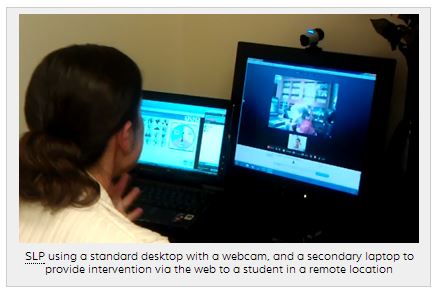Telepractice as a Service Delivery Model for School-Aged Children in Need of Speech, Language, and Communication Intervention
[Source: Disability Info.org]

According to the American Speech-Language Hearing Association “communication disorders are among the most common disabilities in the United States” (ASHA, 2008). More specifically, national demographic data gathered in 2003 identified that of the estimated 6,100,000 children between ages 3-21 served under the Individuals with Disabilities Education Act (IDEA) in the public schools, approximately 24% of students (1,470,000 students) received services for a primary speech or language disorder (U.S. Department of Education, 2005). However, despite this clear need for services, there is a well-documented shortage of speech-language pathologists (SLPs; American Association for Employment in Education, 2008; Chmelynski, 2005).
In order to compensate for the shortage of SLPs and the need for speech-language intervention services school systems have started to employ innovative strategies, such as using telepractice, to maximize existing resources and increase access to SLPs. “Telepractice is the application of telecommunications technology to the delivery of speech language pathology … services at a distance by linking clinician to client/patient or clinician to clinician for assessment, intervention, and/or consultation” (ASHA, 2013), and is a recognized form of service delivery within the field of speech pathology.
Read the Rest of this Article on Disability Info.org
PediaStaff is Hiring!
All JobsPediaStaff hires pediatric and school-based professionals nationwide for contract assignments of 2 to 12 months. We also help clinics, hospitals, schools, and home health agencies to find and hire these professionals directly. We work with Speech-Language Pathologists, Occupational and Physical Therapists, School Psychologists, and others in pediatric therapy and education.
